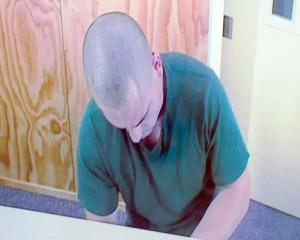
The 16-year-old was allegedly stabbed to death in the bedroom of her Corstorphine home on February 2 last year by Venod Skantha (32).
He is on trial before the High Court at Dunedin charged with murder and four counts of threatening to kill.
The Crown case is that the catalyst for the violent attack came just minutes before Amber-Rose's death when she threatened to go to Skantha's Dunedin Hospital bosses and the police with allegations of sexual offending.
The defendant was on a final warning in his job at the time and the victim's claims would have likely ended his medical career, prosecutors said.
ESR forensic scientists spent yesterday detailing areas where blood was found at various scenes and how samples were collected.
A teenage witness previously told the court how he drove the defendant to and from Amber-Rose's house, to Blackhead where her phone was allegedly dumped, back to the defendant's Fairfield home to clean the car and then onto his ex-girlfriend's home in Balclutha where they spent the next two nights.
Today another ESR scientist Timothy Power explained the analysis of the samples and the statistical likelihood of the DNA profiles.

Mr Power said the blood was 800,000 million times more likely to be from Amber-Rose than another random member of the country's population.
That was "extremely strong scientific support", he said.
A transfer blood stain on the car's passenger door came back with a mix of two or more people's DNA.
Mr Power's analysis showed it was nine million times more likely to be from Skantha and one other than two random people; and 40 million times more likely to belong to Amber-Rose and one other.
That too was an extremely high likelihood of accuracy.
Defence counsel Jonathan Eaton QC criticised his client's teenage friend when he gave evidence earlier this week.
He suggested the witness had deliberately put the blood on Skantha's shoes to portray him as the killer.
Similarly, Mr Eaton said the blood in the car must have been planted to frame the doctor.
"You must've had, whether on Amber's licence or something else, some of her blood. You had access to that and rubbed or flicked it around the car," he said.
The teenager denied doing so.
The trial continues.










